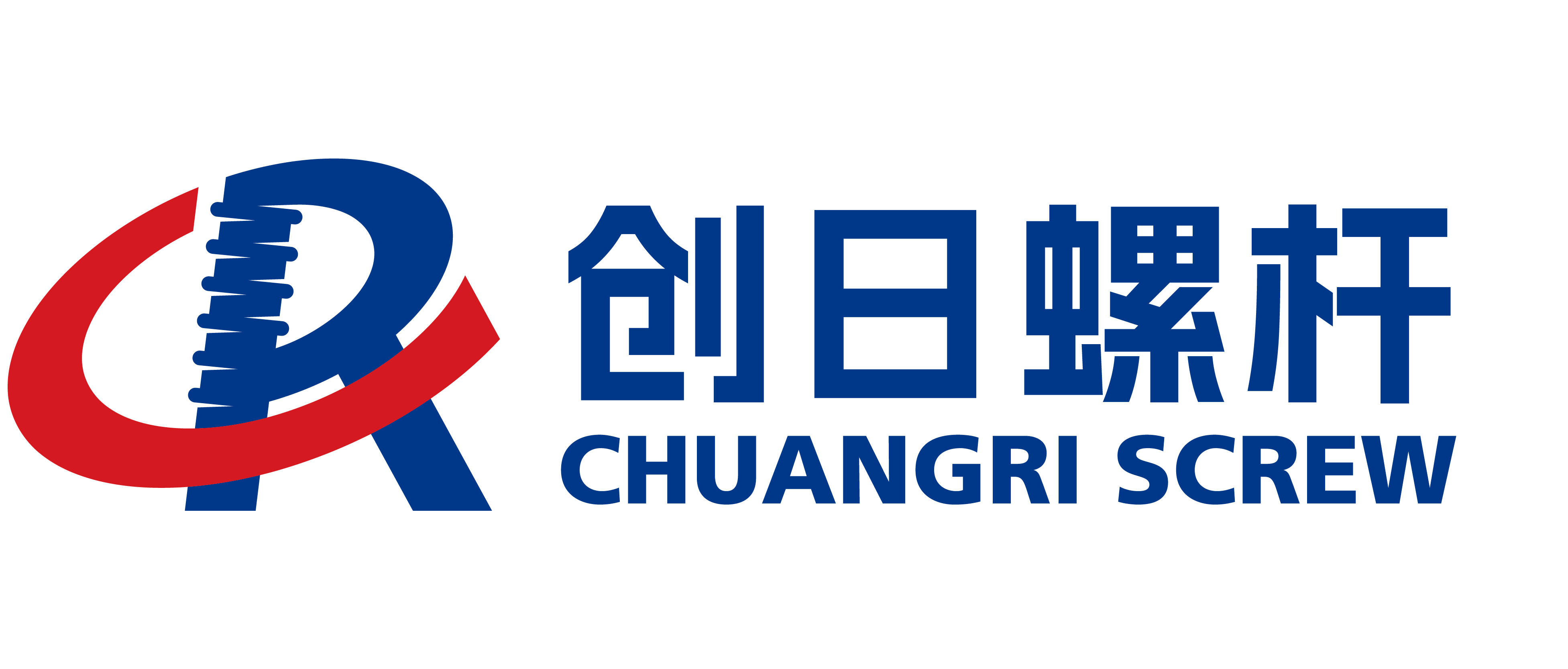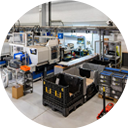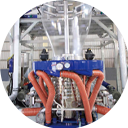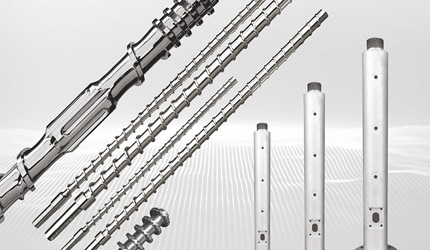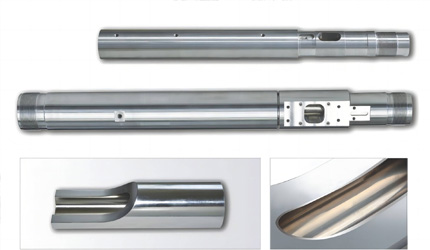Advanced Feed Screws: Pushing the Limits of Extrusion
Advanced Feed Screws: Pushing the Limits of Extrusion
CNPLAST 2025: International Rubber & Plastics Exhibition
CHUANGRI SCREW will participate in the CNPLAST 2025 International Rubber & Plastics Exhibition, scheduled to be held on April 25th, and showcase innovative solutions in the plastics and rubber industry. CHUANGRI SCREW will introduce its energy-efficient and long-lasting precision extrusion and injection molding techniques. The event is a world platform for businesspeople to exchange innovations, overcome challenges of fluctuation in material cost and find innovations in automation and ecoproducts. Customers can meet with CHUANGRI SCREW experts to discuss personalized solutions for maximizing production efficiency. Join us to discover how CHUANGRI SCREW’s expertise drives progress in polymer processing and aligns with global industrial trends.
What Makes Advanced Feed Screws Essential in Extrusion Processes?
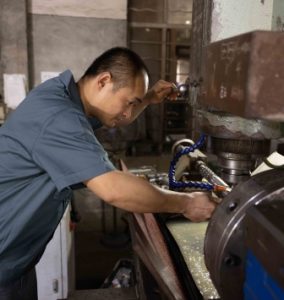
The Role of Feed Screws in Extrusion Efficiency
Feed screws are the backbone of the extrusion process and are the critical connection between turning raw materials into high-quality finished products. Feed screws perform three principal functions: solid conveying, melting and pumping or metering. The plastic characteristics when processed are not identical to one another and therefore the requirement for feed screws to be designed specifically for the material and application. Efficient feed screw designs offer even melting, maximum shear stress control and enhanced mixing efficiency, all of which translate to better product quality and greater production capacity.
Why Precision Matters in Feed Screw Design
Designing a feed screw is not only about meeting technical specifications, it’s a critical consideration that has a direct bearing on how extrusion systems perform and hold up in the long term. A good feed screw design is a prerequisite for accomplishing even processing of raw materials to avoid defects and enhance efficiency. CHUANGRI SCREW places a strong focus on precision through solutions that are tailored to specific manufacturing requirements. Their sophisticated engineering methods guarantee that each screw has specifications in terms of size accuracy and wear and corrosion resistance. CHUANGRI SCREW uses materials such as 38CrMoAla and SKd61 and other technical alloys to enhance the strength and efficiency of such screws. Accuracy is essential in minimizing delays due to malfunctions of machinery and material variations to ensure uninterrupted, smooth production processes.
How Does CHUANGRI SCREW Redefine Advanced Feed Screws?
Key Features of CHUANGRI SCREW’s Advanced Feed Screws
High-Performance Materials Used by CHUANGRI SCREW
CHUANGRI SCREW carefully chooses better quality materials up to standard to achieve high standards in their feed screw production process. They use the finest quality material like AISI 4140 and INCONEL alloys which are extensively recognized for their excellent wear and corrosion resistance capacity with the ability to sustain high levels of heat.
The firm uses techniques such as nitriding and electroplating in a bid to make the performance of their screws even improved than before. For example:
- Nitriding Process: Provides thermal stability with hardness 65–70 HRC.
- Bimetallic Coatings: Offer excellent wear resistance by metalizing tungsten carbide or nickel-base alloys.
- Quenching: Increases surface hardness with structural integrity.
- Electroplating: Enhances adhesion and strength with chromium or titanium plating.
Customization Options for Specific Extrusion Needs
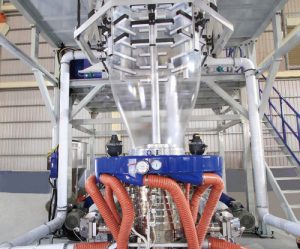 CHURANGRI SCREW stands out for its expertise in crafting feed screws to meet specific production needs effectively. Their research and development team utilizes design tools such as AutoCAD and SolidWorks to develop tailored solutions for a wide range of uses. From film extrusion to pipe production and recycling pelletizing processes, CHURANGRI SCREW delivers tailor-made designs that boost efficiency and minimize material wastage. For example:
CHURANGRI SCREW stands out for its expertise in crafting feed screws to meet specific production needs effectively. Their research and development team utilizes design tools such as AutoCAD and SolidWorks to develop tailored solutions for a wide range of uses. From film extrusion to pipe production and recycling pelletizing processes, CHURANGRI SCREW delivers tailor-made designs that boost efficiency and minimize material wastage. For example:
- Blown Film Extrusion: Double-threaded designs improve output by up to 20% while ensuring superior melt temperature control.
- Pipe Manufacturing: Dual barrier zone designs enhance mixing uniformity for PPR and HDPE pipes.
- Recycling Pelletizing: Nickel-based alloy layers extend service life while maintaining product purity.
Innovative Engineering Behind CHUANGRI SCREW’s Products
CHUANGRI SCREW’s dedication to innovation shines through in their engineering procedures. Their facility is outfitted with cutting-edge CNC machining tools that can perform threading, milling grinding, polishing, nitrifying and applying bimetallic coatings. Every phase is closely supervised to guarantee accuracy and uniformity. Key innovations include:
- HVOF Tungsten Carbide Coating: Ideal for processing highly filled or corrosive resins.
- Three-Side Alloy Technology: Extends service life by over 30% in high-wear applications.
- Self-Cleaning Screw Designs: Facilitate faster material/color changeovers by preventing polymer adhesion.
Furthermore, CHAUNGRI SCREW ensures that each item they produce meets quality standards through thorough inspection procedures. Starting from selecting the materials to the step of packaging with oil coatings and wooden crates for secure transportation every aspect demonstrates their commitment to delivering top-notch products.
Why Choose CHUANGRI SCREW as Your Feed Screw Manufacturer?
Expertise and Experience in the Industry
With over 30 years of experience, CHUANGRI SCREW has completed more than 4,600 projects and served clients in over 50 countries worldwide. Their expertise is evident in their ability to tailor solutions for diverse applications from extrusion to injection molding processes.
Commitment to Quality and Durability
CHUANGRI SCREW prioritizes quality in all operations according to ISO 9001;2008 standards to guarantee reliable processes in producing every screw. The company scrutinizes every phase of production—from the selection of raw materials to packaging of products—through the use of state-of-the-art testing devices to ensure that every product meets world-class quality standards and expectations. An example is when nitrided screws are put through tests for checking hardness within the range of HV850°–1000° degrees Celsius. Meanwhile, bimetallic barrels are examined for their durability against wear and protection from corrosion issues.
H13 steel along with INCONEL alloys known for their excellent resistance to wear and corrosion as well as their capability to endure high temperatures effectively. Moreover, CHUANGRI SCREW employs techniques like quenching and bimetallic coatings to boost the lifespan of their feed screws.
When you select CHAUNGRI SCREW as the manufacturer of your feed screws, you will benefit from their knowledge in the field of exceptional quality measures and top-notch products tailored to enhance your extrusion or injection molding operations.
Frequently Asked Questions about Advanced Feed Screws
Q: What is a feed screw?
A: Feed screws, when used in the plastics manufacturing industry, play a critical role in the making of polymers. The feed screw turns within a cylinder (also known as a barrel) in the extrusion or injection molding process to provide a uniform material flow.
Q: What is the purpose of a screw feeder?
A: Screw feeders are used in thousands of material handling applications and are designed to meter bulk materials at a controlled feed rate. A standard screw conveyor is usually driven by another screw conveyor and the amount of material delivered equals the amount of material fed into the inlet.
Q: What is the difference between a lead screw and a feed screw?
A: They do the same thing in the sense that both drive the carriage. But only the lead screw is connected to the threading indicator and has advanced ratios appropriate to threading. A feed rod can move much (relatively) slower than you’d want for threading.
Q: What is the screw feed mechanism used for?
A: The screw-feed system is used for products that are not very free-flowing. This feeding mechanism is also ideal for very powdery and fluidized products, since the screws are contained in a fully enclosed housing that prevents any dust from escaping into the surrounding work area.
